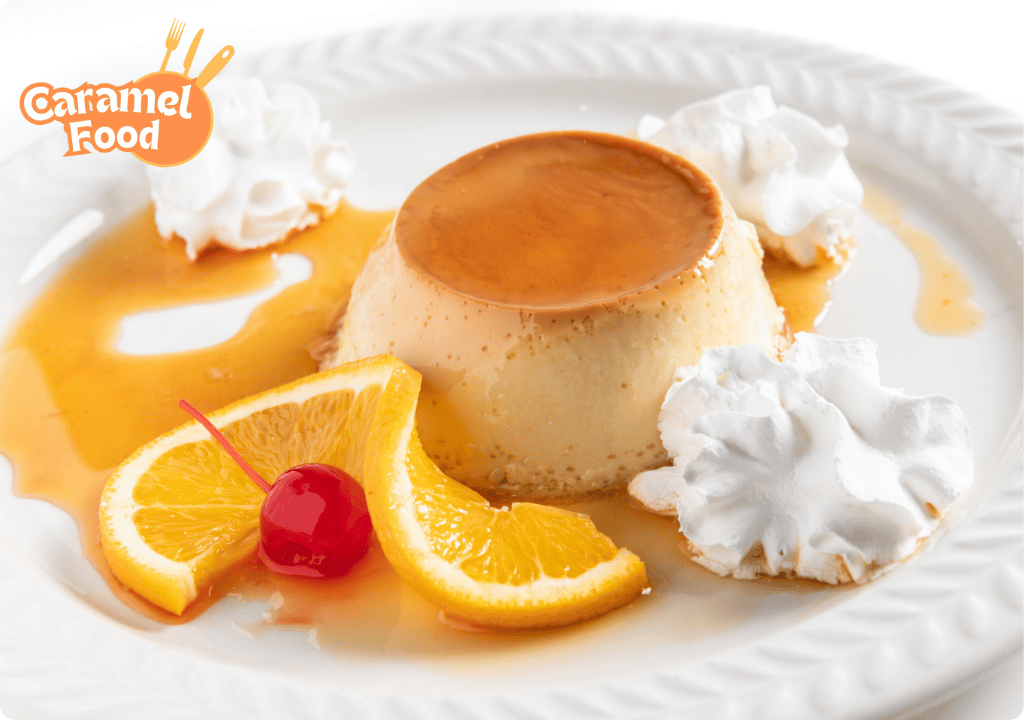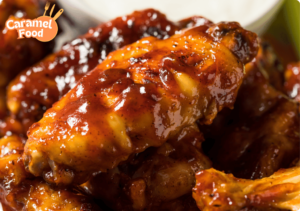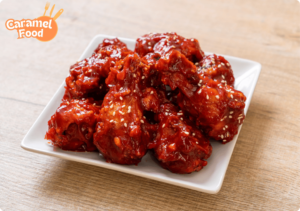A Global Dessert Phenomenon
ORANGE CRÈME CARAMELS , also known as flan or caramel custard, is a beloved dessert across the globe. From French patisseries to Latin American kitchens, its creamy texture and rich caramel topping have captivated palates for generations. Despite its widespread popularity, each region offers its own unique twist on the dessert, making it a versatile and universally enjoyed sweet treat.
Simplicity Meets Elegance
The beauty of crème caramel lies in its simplicity. Made from basic ingredients like eggs, sugar, and milk, it presents a classic case of how simple ingredients can be transformed into something truly elegant. The process of inverting the dessert before serving allows the caramel to cascade over the custard, creating a visually appealing glossy finish that is as pleasing to the eyes as it is to the taste buds.
Elevating with Citrus
The addition of caramelised orange elevates the classic crème caramel to new heights. The citrus not only enhances the flavor profile by adding a burst of freshness but also contributes to its aesthetic appeal. The vibrant orange zest speckled throughout the custard is not just a flavor enhancer but also adds a touch of color that signifies the refreshing twist waiting to be savored.

Ingredients for Caramelised Orange Crème Caramels
The Caramel Components
To make the perfect caramel, a precise combination of granulated sugar and water is essential. The process of caramelization involves carefully monitoring the sugar as it transforms into a deep amber syrup, which will serve as the flavorful base for the dessert. The challenge lies in achieving the right consistency without burning the sugar, a delicate balance that can make or break the dessert.
Building the Custard Base
The custard base is where the heart of the dessert lies. Whole milk and eggs are fundamental in creating the creamy texture that crème caramel is famous for. The milk enriches the custard, while the eggs provide structure and a silky finish. The vanilla extract acts as a subtle enhancer, bringing out the natural sweetness of the ingredients without overpowering the citrus notes.
Citrus Infusion
The zest of two oranges and a quarter cup of freshly squeezed orange juice introduce a delightful citrus twist to the traditional recipe. The zest provides an aromatic quality, while the juice offers a tangy balance to the sweetness of the caramel. Together, they transform the dessert into a refreshing treat that tantalizes the taste buds with every spoonful.

Step-by-Step Preparation
Step 1: Crafting the Perfect Caramel
- Combining Ingredients: In a saucepan, combine 1 cup of granulated sugar and 1/4 cup of water. Cook over medium heat, stirring until the sugar dissolves. This initial step requires patience and gentle stirring to prevent the sugar from crystallizing.
- Caramelization Process: Once dissolved, stop stirring and allow the mixture to simmer. Watch closely as it transitions from a light golden color to a deep amber hue, which should take approximately 10 minutes. This stage requires precision, as a few seconds can be the difference between a perfect caramel and a burnt one.
- Preparing Ramekins: Carefully pour the caramel into individual ramekins, swirling to coat the bottom evenly. This step ensures a consistent layer of caramel for each serving. Set the ramekins aside to cool, allowing the caramel to harden slightly, forming a luscious base for the custard.
Step 2: Preparing the Custard
- Heating the Milk: Preheat your oven to 325°F (160°C). In a saucepan, heat 3 cups of whole milk until it is warm but not boiling. The warmth of the milk helps in dissolving the sugar and evenly distributing the flavors throughout the custard.
- Incorporating Flavors: Remove from heat and stir in 1 tablespoon of vanilla extract. This addition enhances the overall flavor, providing a subtle sweetness that complements the citrus elements.
- Mixing Ingredients: In a large bowl, whisk together 6 large eggs, 1/2 cup of granulated sugar, the zest of 2 oranges, and 1/4 cup of freshly squeezed orange juice until well combined. The goal is to achieve a homogenous mixture that will set evenly during baking.
- Combining Mixtures: Gradually add the warm milk to the egg mixture, whisking continuously. This technique prevents the eggs from cooking prematurely and ensures a smooth, creamy custard.
Step 3: Combining and Baking
- Layering the Ramekins: Pour the custard mixture over the cooled caramel in the ramekins, ensuring an even distribution. This layering is crucial for the final presentation, as it creates a seamless blend of caramel and custard.
- Creating a Water Bath: Place the ramekins in a baking dish and fill the dish with hot water until it reaches halfway up the sides of the ramekins. This bain-marie method provides gentle, even heat, essential for achieving a silky texture.
- Baking to Perfection: Bake for 45-50 minutes, or until the custard is set but still slightly jiggly in the center. The slight jiggle ensures that the custard will have the perfect creamy consistency once cooled.
- Cooling and Setting: Remove the ramekins from the water bath and let them cool to room temperature. Refrigerate for at least 4 hours or overnight. This final chilling step allows the custard to fully set and the flavors to meld beautifully.
Serving Suggestions
Presenting with Elegance
When ready to serve, run a knife around the edge of each ramekin to loosen the custard. Invert the ramekin onto a plate, allowing the caramel to flow over the crème caramel, creating an enticing presentation. The smooth transition of caramel over custard is a hallmark of the dessert’s visual appeal.
Garnishing for Flair
Garnish with fresh orange slices or a sprig of mint for an elegant touch. The addition of these garnishes not only enhances the presentation but also adds a layer of freshness and color that complements the dessert’s flavor profile.
Pairing with Accompaniments
Consider pairing the dessert with a light dessert wine or a fragrant tea to enhance the dining experience. The right pairing can elevate the flavors of the caramelised orange crème caramel, creating a harmonious balance that delights the palate.

Tips for Perfect Caramelised Orange Crème Caramels
Achieving the Perfect Caramel
- Using the Right Tools: Use a light-colored saucepan to monitor the color change of the caramel. This allows for better visibility and control over the caramelization process.
- Patience and Precision: Be patient and do not stir the caramel once the sugar has dissolved, as this can cause it to crystallize. Let the sugar naturally transition to the desired color.
- Handling Hardened Caramel: If the caramel hardens too quickly, gently reheat the ramekins in a warm water bath to soften it. This technique ensures the caramel remains pliable and enhances the final texture.
Ensuring a Smooth Custard
- Straining for Smoothness: Strain the custard mixture before pouring it into the ramekins to remove any egg solids or zest. This step is crucial for achieving a silky-smooth custard.
- Quality Ingredients Matter: Use fresh, high-quality ingredients for the best flavor and texture. The quality of the milk, eggs, and oranges directly impacts the dessert’s overall taste.
- Avoid Overbaking: Avoid overbaking to prevent the custard from becoming too firm or rubbery. The key is to remove the custard when it is just set, allowing residual heat to complete the cooking process.

The Delight of Caramelised Orange Crème Caramels
A Refreshing Twist on Tradition
Caramelised orange crème caramels are a delightful twist on a classic dessert. The citrus notes from the orange zest and juice add a refreshing contrast to the rich, creamy custard and sweet caramel. This harmonious blend of flavors makes it a standout dessert that is both familiar and exciting.
Perfect for Any Occasion
This dessert is perfect for special occasions or as a sweet treat to enjoy at home. Its elegant appearance and exquisite taste make it suitable for dinner parties, celebrations, or simply as a luxurious indulgence after a meal.
Impress with Homemade Elegance
By following the steps outlined in this article, you can create a stunning and delicious dessert that will impress family and friends alike. The combination of creamy custard, rich caramel, and zesty orange is sure to leave a lasting impression. So, the next time you’re looking for a dessert that is both elegant and flavorful, give caramelised orange crème caramels a try!
Here are some frequently asked questions (FAQs) about Irresistible Orange Crème Caramels:
1. What is the difference between crème caramel and flan?
Crème caramel and flan are essentially the same dessert, with slight variations based on regional recipes. Both feature a creamy custard topped with caramel, but flan may include additional ingredients, such as cream or different flavorings.
2. Can I use other citrus fruits instead of oranges?
Yes, you can experiment with other citrus fruits like lemons, limes, or grapefruits to create unique flavor profiles in your crème caramels. Just adjust the quantity to maintain balance.
3. How do I prevent the caramel from burning?
To prevent burning, closely monitor the caramel as it cooks. Once the sugar has dissolved, stop stirring and watch for the color change, which should transition slowly from light golden to deep amber.
4. Can I make caramelised orange crème caramels ahead of time?
Absolutely! You can prepare the caramelised orange crème caramels in advance. They can be refrigerated for up to three days before serving, making them a great option for dinner parties or special occasions.
5. How do I ensure my custard is smooth?
To achieve a silky smooth custard, strain the mixture before pouring it into the ramekins to remove any lumps or zest. Also, avoid overbaking to prevent a rubbery texture.
6. What is the best way to serve crème caramels?
To serve, run a knife around the edge of the ramekin, then invert it onto a plate. Garnish with fresh orange slices or mint for an attractive presentation.
7. Can I use low-fat milk for the custard?
While you can use low-fat milk, whole milk is recommended for the best creaminess and texture in the custard. For a richer result, consider using half-and-half or cream.
8. What can I pair with caramelised orange crème caramels?
These crème caramels pair wonderfully with dessert wines, coffee, or a fragrant tea, enhancing the overall dining experience.



